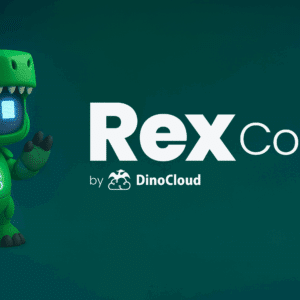
The digital landscape is evolving rapidly, pushing businesses towards cloud computing. By 2024, 94% of companies will use cloud services. Yet, the migration process is complex, often not aligned with business goals, challenging many organizations.
A successful cloud migration strategy is key. It acts as a roadmap from assessment to the final shift. Aligning cloud initiatives with business goals ensures a smooth transition, unlocking numerous benefits for our organization.
Key Takeaways
- Crafting a comprehensive cloud migration strategy is crucial for a successful transition to the cloud.
- Businesses that move over half of their operations to the cloud can see profit growth by up to 11.2% annually.
- Common cloud migration challenges include security and compliance risks, as well as aligning migration strategies with clear business objectives.
- A thorough assessment of current infrastructure and prioritizing factors like scalability, security, and cost-effectiveness are essential before cloud migration.
- Utilizing a phased approach and seeking expert guidance can help navigate the complexities of cloud migration successfully.
What is Cloud Migration?
Cloud migration is the strategic process of moving an organization’s applications, data, and infrastructure from on-premises to the cloud. It requires meticulous planning, assessment, and execution for a seamless transition. This strategy involves a comprehensive plan for moving applications, data, and infrastructure to the cloud, which can be partial or complete. It also includes shifting from one cloud platform to another, known as cloud-to-cloud migration.
Cloud migration encompasses various strategies, including full data center exit, moving between cloud vendors, and migrating specific workloads. It involves assessment, planning, migration, and optimization phases. Migration strategies range from rehosting to re-architecting, each offering different levels of complexity and optimization potential.
Rehosting is the quickest migration method, while refactoring is chosen for adding features, scaling, or enhancing performance in the cloud. Repurchasing involves moving to a different product and replacing existing software licenses. Retiring assets during migration can reduce costs and complexity. Retaining applications is done for those with recent upgrades or unclear migration reasons.
By 2026, 75% of organizations will adopt cloud-based data infrastructure, according to tech analysts. Hybrid cloud migration leverages current on-premises investments for flexibility and efficiency. Refactoring applications with a PaaS tool enhances scalability, resilience, and efficiency in the cloud. Migrating specific workloads to the cloud can offer lower costs, reliable performance, and enhanced security.
| Cloud Migration Strategies | Description |
|---|---|
| Rehosting (Lift-and-Shift) | The quickest and least complex migration approach, where applications are moved to the cloud with minimal changes. |
| Replatforming (Refactor) | Businesses choose this strategy when they need to add features, scale, or boost performance in the cloud environment. |
| Refactoring (Move and Improve) | Applications are redesigned to take advantage of cloud-native capabilities, often using a PaaS tool. |
| Re-architecting | Applications are completely redesigned and rebuilt to take full advantage of the cloud’s capabilities. |
| Rebuilding | Organizations replace existing applications with new cloud-native applications, abandoning legacy systems. |
Benefits of Cloud Migration
Cloud migration brings about significant advantages for businesses across various scales. It leverages cloud computing to offer cloud scalability, cloud cost savings, cloud flexibility, and improved cloud security. These advantages collectively foster business growth, enhance operational efficiency, and provide a competitive edge in the fast-paced digital world.
Scalability
The cloud’s scalability allows businesses to swiftly adjust to evolving demands. It eliminates the limitations of physical infrastructure, enabling organizations to scale up or down as needed. This flexibility lets them capitalize on new opportunities, handle sudden increases in user activity, and maintain optimal performance without the expense of on-premises hardware upgrades.
Cost Savings
Cloud migration presents a cost-effective alternative by removing the need for businesses to invest in and manage their own infrastructure. The pay-as-you-go model means companies only pay for the resources they use, leading to substantial cost savings. Moreover, the cloud service provider handles software updates, security patches, and maintenance, alleviating the IT team’s workload.
Cloud migration also boosts cloud flexibility by allowing users to access data and services from anywhere. The cloud provider ensures security and compliance, safeguarding sensitive information in a hybrid cloud setup.
By harnessing the transformative potential of cloud migration, businesses can enter a new era of scalability, cost-effectiveness, and operational agility. This positions them for sustained success in the digital era.
Cloud Migration Strategies
Cloud migration can be a complex process for organizations. Understanding the different cloud migration strategies helps businesses make informed decisions. These strategies include rehost, relocate, replatform, refactor, repurchase, retire, and retain, each with its own pros and cons.
The rehost or “lift and shift” method moves an application to the cloud with minimal changes. It’s ideal for companies without cloud expertise, as it requires little re-engineering. The relocate strategy, or “hypervisor-level lift and shift,” allows for migration with minimal downtime and no major changes to the application’s architecture.
For those wanting to use cloud-native features without rewriting applications, the replatform strategy is an option. It allows for some optimization while keeping the application’s core architecture intact.
- Refactor or “re-architect” requires a bigger investment, focusing on re-architecting workloads for cloud-native capabilities like serverless computing.
- Repurchase, or “drop and shop,” involves switching to third-party managed services, reducing operational efforts.
- Retire means terminating or downsizing redundant or outdated applications, optimizing costs and resources.
- Retain is for applications that cannot be migrated immediately or must stay on-premises for specific reasons, often part of a hybrid approach.
Choosing the right cloud migration strategy requires evaluating each application’s architecture, available skills, budget, and timelines. Tailoring the migration approach to workload needs maximizes cloud adoption benefits, including scalability, cost savings, and improved security and accessibility.
Cloud Migration Challenges
Organizations venturing into cloud migration face numerous challenges that complicate the shift of resources and workloads. Key issues include the absence of a detailed cloud migration strategy, the intricacies of cost management, and the perils of cloud vendor lock-in and data security compliance.
Lack of Strategy
The primary obstacle many organizations meet is the absence of a structured cloud migration strategy. According to a recent study, 85% of organizations encounter difficulties due to not having a cloud migration strategy in place before moving to the cloud. Without a blueprint, companies find it challenging to gauge the expected return on investment (ROI) and struggle with managing cloud costs effectively. This often leads to unforeseen expenses and budget overruns.
Cost Management
Effective cost management is a major challenge in cloud migration. Approximately 65% of businesses face difficulties in executing successful cloud migration due to their complex existing architecture. The migration process can span 6-12 months, during which time organizations may incur costs for both on-premises and cloud infrastructure. This can result in a significant increase in infrastructure costs of up to 30%. Furthermore, in around 60% of cases, businesses experience higher cloud costs after migration compared to their on-premises data center costs. Inadequate research about cloud services and provider policies can also lead to unexpected billing or fees, as experienced by an estimated 70% of organizations.
To overcome these challenges, a comprehensive strategy is essential. It should focus on developing a clear migration plan, implementing effective cost management practices, and understanding cloud vendor offerings and their policies. By addressing these issues proactively, organizations can ensure a smooth and successful cloud migration that supports their long-term business goals.
Cloud Migration Phases
Starting a cloud migration journey requires navigating through several critical phases for a smooth transition. These phases cover the essential steps needed to plan, execute, operate, and optimize cloud migration strategies. They ensure a well-structured approach to moving to the cloud.
The cloud migration process includes five main phases:
- Preparation: This initial phase sets the organization’s cloud migration goals and assesses its readiness. It involves evaluating the current IT setup, identifying risks, and analyzing dependencies. This helps in choosing the best migration strategy.
- Planning: In the planning phase, goals are defined, a cloud service provider is selected, and the necessary resources and tools are identified. This stage is vital for creating a detailed migration plan that meets compliance and security standards.
- Migration: The migration phase involves moving data, applications, and workloads to the cloud. Techniques like lift-and-shift or refactoring are used to ensure a smooth transition.
- Operation: This phase focuses on managing and maintaining the cloud environment. It includes resource management, security, and performance monitoring. Ensuring the cloud runs smoothly is crucial in this phase.
- Optimization: The final phase, optimization, aims to continually improve cloud operations and add more value to the business. It involves monitoring performance, adjusting resources, and implementing cost-saving strategies to optimize the cloud setup.
By following these phases, organizations can plan their cloud migration strategies, execute the migration process, operate the cloud environment effectively, and optimize their cloud infrastructure. This ensures they fully benefit from cloud computing.
| Phase | Key Activities |
|---|---|
| Prepare |
|
| Plan |
|
| Migrate |
|
| Operate |
|
| Optimize |
|
By going through these phases, organizations can plan their cloud migration, execute the migration process, operate the cloud environment effectively, and optimize their cloud infrastructure. This approach maximizes the benefits of cloud computing.
Cloud Migration
The cloud migration process is a complex journey for organizations aiming to shift their data, applications, and infrastructure to the cloud. It’s not just about moving data from local data centers to public clouds like AWS. It also involves transferring data from one cloud service to another.
This process is divided into five main stages: preparation, planning, migration, operation, and optimization. In the preparation phase, organizations evaluate their cloud readiness, identify applications and data for migration, and choose the right cloud provider. The planning stage involves crafting a detailed migration strategy, including timelines, resources, and potential risks.
- The migration phase is where the actual data and application transfer to the cloud happens. This phase demands careful monitoring to ensure everything goes smoothly and address any issues promptly.
- During the operation stage, the management and upkeep of the migrated systems in the cloud ensure they integrate well and perform optimally.
- Lastly, the optimization phase aims at continually enhancing the cloud infrastructure, reducing costs, and refining the cloud migration process.
The cloud migration data transfer is a critical part of the process. Ensuring data remains accessible and intact during migration is crucial, as disruptions can affect business operations. Moreover, cloud migration testing is essential to confirm the migration’s success and spot potential problems before going live.
The cloud migration optimization phase marks the end of the process. Here, organizations refine their cloud setup, cut costs, and continually enhance their cloud migration strategy to fully leverage cloud benefits.
| Cloud Migration Phases | Key Activities |
|---|---|
| Preparation | Assess cloud readiness, identify applications and data for migration, select cloud provider |
| Planning | Develop detailed migration strategy, including timelines, resources, and potential risks |
| Migration | Transfer data and applications to the cloud, monitor the process for any issues |
| Operation | Manage and maintain the migrated systems in the cloud environment, ensure seamless integration and optimal performance |
| Optimization | Continuously improve the cloud infrastructure, optimize costs, and enhance the overall cloud migration process |
Conclusion
A well-thought-out cloud migration strategy is crucial for companies aiming to leverage cloud technology. Understanding the various migration approaches—such as rehosting, refactoring, re-platforming, retaining, and retiring—helps businesses select the best fit for their needs. Cloud migration offers numerous benefits, including scalability, cost savings, flexibility, and enhanced security.
Yet, organizations must be aware of the challenges, like the absence of a clear strategy, managing costs, vendor lock-in, and ensuring data security and compliance. Engaging with cloud migration services can aid in overcoming these hurdles, facilitating a seamless cloud transition. This enables companies to optimize operational efficiencies and foster innovation.
Global spending on cloud services is projected to surge by 20.7%, reaching a total of $591.8 billion. Cloud migration stands out as a key tech trend for 2024. By tapping into cloud computing models, including IaaS, PaaS, Serverless computing, and SaaS, firms can boost their agility, flexibility, and productivity. This opens up new business avenues and enhances customer awareness.
For businesses aiming to streamline their cloud migration process and maximize the benefits of cloud computing, DinoCloud is here to help. Our team of cloud experts can guide you through every step of your migration journey, ensuring a smooth transition and optimal results. Discover more about how DinoCloud can support your cloud migration strategy here!
FAQ
What is cloud migration?
Cloud migration is the strategic process of moving an organization’s applications, data, and infrastructure to the cloud. It requires a detailed plan, assessment, and execution for a seamless transition. This ensures the organization can adapt to the cloud environment effectively.
What are the benefits of cloud migration?
Cloud migration offers numerous advantages, including scalability, cost savings, flexibility, and enhanced security and compliance. It allows businesses to scale resources quickly without the need for physical infrastructure investments. This flexibility and scalability are key to adapting to changing business demands.
What are the different cloud migration strategies?
Various cloud migration strategies exist, tailored to meet specific business needs. These include Rehost (Lift and Shift), Relocate, Replatform, Refactor (Re-architect), Repurchase, Retire, and Retain. Each strategy has distinct advantages and disadvantages, making it crucial to choose the right one for the organization’s goals.
What are the main challenges in cloud migration?
Cloud migration faces significant challenges, such as the absence of a clear strategy, managing costs, avoiding vendor lock-in, and ensuring data security and compliance. Overcoming these hurdles requires meticulous planning and a focus on these critical areas for a successful migration.
What are the key stages of the cloud migration process?
The cloud migration process encompasses five essential stages: preparation, planning, migration, operation, and optimization. These stages ensure that business objectives are set, a comprehensive migration roadmap is developed, and the actual data and workload transfer is executed. Managing the cloud environment and continuously improving cloud operations are also vital.



